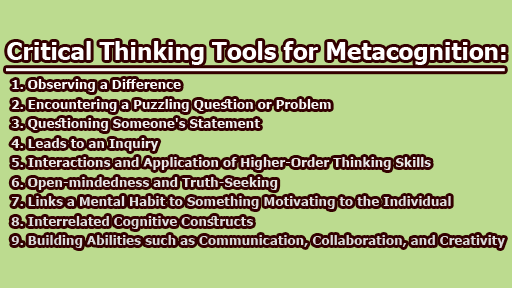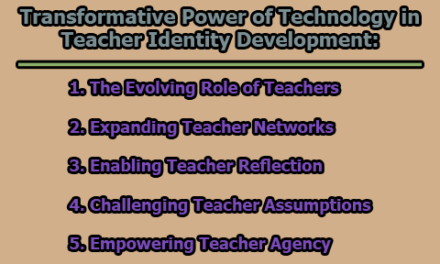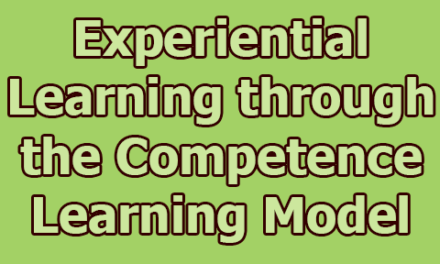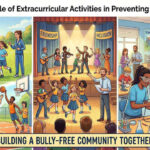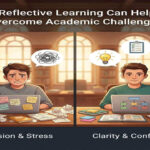Critical Thinking Tools for Metacognition:
Metacognition, the ability to think about one’s own thinking processes, is a foundational aspect of critical thinking. It involves being aware of and understanding our cognitive abilities, strategies, and biases. When combined with critical thinking tools, metacognition becomes a powerful tool for intellectual growth and self-improvement. In this article, we will explore the critical thinking tools for metacognition.
1. Observing a Difference: Critical thinking often begins with observation. Observing a difference involves keenly paying attention to various aspects of a situation, idea, or phenomenon and recognizing any inconsistencies, disparities, or peculiarities. This skill acts as a gateway to the deeper inquiry by prompting individuals to explore the reasons behind the observed differences.
By observing a difference, individuals can identify potential problems or areas of improvement. For example, a scientist may notice unexpected results in an experiment, leading them to question the validity of their hypothesis. This prompts them to delve further into the underlying causes and explore alternative explanations, fostering a more thorough understanding of the subject matter.
2. Encountering a Puzzling Question or Problem: Encountering a puzzling question or problem is a catalyst for critical thinking. When individuals are presented with a challenging or perplexing situation, they are naturally motivated to seek solutions or answers. These questions stimulate curiosity and prompt individuals to engage in cognitive processes to find viable resolutions.
Puzzling questions are often encountered in various contexts, including academia, business, and everyday life. For instance, an entrepreneur may be faced with a declining market share for their product, prompting them to critically assess the reasons behind this trend and develop innovative strategies to regain momentum.
3. Questioning Someone’s Statement: Questioning someone’s statement is an important aspect of critical thinking that encourages individuals to avoid accepting information at face value. It involves challenging assumptions, seeking evidence or reasons to support the statement, and exploring alternative perspectives. This skill fosters a healthy skepticism and promotes truth-seeking, making individuals less susceptible to misinformation and manipulation.
In many domains, such as journalism, scientific research, and policy-making, questioning someone’s statement is crucial for ensuring accuracy and reliability. By encouraging critical scrutiny of information, this tool cultivates a culture of intellectual rigor and fosters a deeper understanding of complex issues.
4. Leads to an Inquiry: Questioning someone’s statement often leads to an inquiry, where individuals embark on a process of systematic investigation to find answers or solutions. Inquiries are driven by the desire to gather evidence, analyze data, and form well-informed conclusions. This process is at the core of critical thinking, as it allows individuals to acquire knowledge and refine their understanding of a subject.
An inquiry-based approach is commonly applied in academic research, scientific investigations, and legal proceedings. By promoting a structured and evidence-based examination of issues, critical thinking helps individuals make sound judgments and informed decisions.
5. Interactions and Application of Higher-Order Thinking Skills: Critical thinking involves the application of higher-order thinking skills, which enable individuals to analyze complex problems and make reasoned decisions. Some of the key higher-order thinking skills include:
- Logical Reasoning: Logical reasoning involves systematically evaluating information and drawing conclusions based on evidence and principles of logic. This skill is essential in problem-solving and decision-making processes.
- Questioning Assumptions: Critical thinkers are adept at identifying underlying assumptions in arguments, statements, or claims. By questioning these assumptions, they can uncover potential biases or weaknesses in the reasoning.
- Considering and Evaluating Alternative Explanations: Critical thinkers actively explore different viewpoints and explanations before arriving at conclusions. They assess the validity and evidence supporting various perspectives to make well-rounded judgments.
- Open-Mindedness and Truth-Seeking: Critical thinkers approach new information with an open mind and are willing to revise their beliefs based on credible evidence. They prioritize seeking the truth over confirming preconceived notions.
- Self-Regulation: Critical thinking involves self-regulation, where individuals monitor their thought processes, emotions, and biases to maintain objectivity and intellectual integrity.
These higher-order thinking skills are indispensable in fostering a culture of critical inquiry and informed decision-making in various fields, including education, science, law, and policy-making.
6. Open-mindedness and Truth-Seeking: Open-mindedness and truth-seeking are integral components of critical thinking. An open-minded individual is receptive to new ideas, perspectives, and evidence, even if they challenge preexisting beliefs. This intellectual flexibility allows for a more comprehensive understanding of complex issues and encourages a collaborative exchange of ideas.
Truth-seeking, on the other hand, is the relentless pursuit of accurate information and reliable evidence. Critical thinkers prioritize the search for objective truths over personal biases or agenda-driven beliefs. By being committed to truth-seeking, individuals can make well-informed decisions and contribute to the advancement of knowledge in their respective fields.
7. Links a Mental Habit to Something Motivating to the Individual: To develop and maintain critical thinking skills, it is crucial to link the mental habit of critical inquiry to something motivating to the individual. Motivation plays a central role in driving individuals to engage in the cognitive effort required for critical thinking. Different people may find motivation through diverse sources, such as personal interests, career aspirations, societal impact, or a passion for lifelong learning.
For students, the prospect of gaining a deeper understanding of a subject they are passionate about can be a powerful motivator for critical thinking. In a professional context, individuals may be driven by the desire to improve efficiency, solve pressing challenges, or advance in their careers. By connecting critical thinking to intrinsic or extrinsic motivations, individuals are more likely to consistently apply these skills in various aspects of their lives.
8. Interrelated Cognitive Constructs: Critical thinking comprises a network of interrelated cognitive constructs that collectively contribute to effective problem-solving and decision-making. Let’s explore each of these constructs:
- Interpretation: The process of interpreting information involves making sense of data, texts, or experiences to extract meaningful insights. Critical thinkers analyze and decode complex information to uncover its significance.
- Explanation: Critical thinkers can articulate and communicate their interpretations, findings, and reasoning in a clear and coherent manner. Effective explanation is crucial for conveying ideas and insights to others.
- Reasoning: Reasoning involves logical and deductive thinking to draw conclusions from evidence or premises. It is the foundation of sound arguments and informed decision-making.
- Evaluation: Critical thinkers assess the strength and weaknesses of arguments, evidence, and solutions. This evaluation process ensures that conclusions are based on credible and reliable information.
- Synthesis: Synthesis is the ability to integrate information from various sources to create a comprehensive understanding of a subject. Critical thinkers synthesize knowledge to form cohesive perspectives.
- Reflection: Reflection is an essential component of critical thinking, enabling individuals to analyze their thought processes, assumptions, and biases. It fosters self-awareness and continuous improvement.
- Judgment: Critical thinkers make well-informed judgments based on careful evaluation and analysis. They consider various factors before arriving at decisions or opinions.
- Self-Regulation: Self-regulation involves monitoring one’s own cognitive processes and emotions to maintain objectivity and avoid biases. This skill ensures that critical thinking remains impartial and rigorous.
By cultivating these interconnected cognitive constructs, individuals develop a holistic approach to critical thinking that empowers them to tackle complex challenges with confidence and clarity.
9. Building Abilities such as Communication, Collaboration, and Creativity: Critical thinking not only enhances intellectual abilities but also builds essential skills that are increasingly valuable in today’s society. These skills include:
- Communication: Critical thinkers excel in articulating their ideas and insights to others. They can convey complex information effectively, facilitating collaboration and shared understanding.
- Collaboration: Critical thinkers are more likely to engage in collaborative problem-solving, as they are open to diverse perspectives and value the contributions of others.
- Creativity: Critical thinking nurtures creativity by encouraging individuals to explore novel ideas, consider alternative approaches, and develop innovative solutions to problems.
In contemporary society, where cross-disciplinary collaboration and creative problem-solving are highly prized, critical thinking serves as a catalyst for the development of these essential abilities.
In conclusion, the integration of metacognition and critical thinking serves as a powerful catalyst for intellectual growth and self-improvement. By fostering self-awareness and prompting us to question and optimize our thought processes, metacognition empowers us to become more effective critical thinkers. The interplay between these two cognitive processes enhances higher-order thinking skills, such as logical reasoning, evaluation of evidence, and open-mindedness, ultimately leading to more well-rounded and informed judgments. Moreover, this dynamic combination not only sharpens our problem-solving abilities but also cultivates essential skills like effective communication, collaborative engagement, and creative thinking, which are increasingly vital in today’s fast-paced and interconnected society. As we embrace metacognitive critical thinking, we embrace a transformative journey of continuous learning and adaptation, allowing us to confidently tackle complex challenges and contribute positively to the ever-evolving landscape of the modern world.
References:
- Spector, J. M., & Ma, S. (2019). Inquiry and critical thinking skills for the next generation: From artificial intelligence back to human intelligence. Smart Learning Environments, 6(1), 8, s40561-019-0088-z. https://doi.org/10.1186/s40561-019-0088-z
- Bunt, B., & Gouws, G. (2020). Using an artificial life simulation to enhance reflective critical thinking among student teachers. Smart Learning Environments, 7(1), 12. https://doi.org/10.1186/s40561-020-00119-6

Library Lecturer at Nurul Amin Degree College

